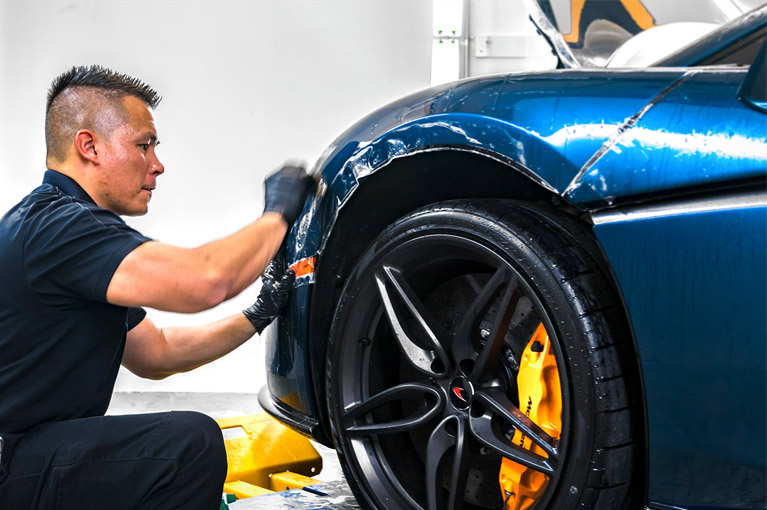
How Do You Maintain Air Bag Suspension?
Positively, most Airbag Suspension Kit systems require very little overall maintenance and are comparatively self-sufficient. That said, there are a few things you should look out for, and based on the environment, you can do a few things to keep your system under check.
-
Air Tank draining condensation
Like any other type of air tank, whether in your car or your shop, you must regularly drain the condensation to keep moisture from building up. You should add a water trap or filter to stop any potential water leaks from your air tank into your manifold. As these traps cannot prevent moisture from building up in your tank, you should drain the tank about every two weeks or more regularly based on how often you service your air suspension system.
-
Use antifreeze air brakes in harsh winter climates:
People who travel in colder climates, where it frequently gets below freezing, should make sure they have anti-freeze for their air brakes on hand. Following the instructions supplied by the anti-freeze manufacturer, you should fill your tank to the recommended level. This will help keep the moisture from freezing and damaging your air system or tank.
-
Air lines should be secure and safe:
Verify that each part of your air suspension system has its airlines securely fastened. This is just another helpful tip for checking your mechanism. This is an easy inspection when the car is fixed on jack stands or a lift while you are working on other components. If it has been a while since you have been underneath it, you should plan time in your calendar to raise your car and check all your lines to ensure they are not broken or improperly fitted.
-
Schedule Time for Normative Upkeep and Repairs:
The most crucial advice regarding air suspension maintenance is to attend all scheduled appointments for routine maintenance. It would be highly appreciated if they helped you find and resolve any possible issues quickly. Professionals will also check the quality of your tires and the alignment of your wheels, and they will make any necessary adjustments to enhance the performance of your air suspension system.
-
Lock collars should be verified
If the lock collar system with your air shocks is installed, ensure it is securely fastened. Ensure the lock collars are impossible to loosen by hand when checking your airlines. A loose lock collar could make your air struts rattle and possibly break.
-
Promptly and once for every component
Even if there isn’t much maintenance needed for the remaining parts of the system, it’s a good idea to take a few minutes to inspect the entire kit thoroughly. It is crucial to check the air compressor to ensure that it is still securely fastened and that all electrical wires function correctly. If you can access the air strut, check the rubber bladder for wear or signs of friction that could point to a future failure. In conclusion, inspecting any pressure or ride height sensors is critical to ensure no more play in them and that they are safe.
-
Check for leaks in the system:
It’s a good idea to look for leaks in the airbags and lines to ensure your air suspension lasts as long as feasible. It gets more challenging for the springs to stay inflated when the lines and bags are damaged. The compressor must work harder as a result, which quickens the rate of wear and tear. Finding air suspension leaks early in your car’s life can help prevent more harm. This is why you should have a qualified expert evaluate your automobile and perform any necessary repairs if you find an issue with the airbags or the airlines.
-
Check the Relationships Among Air Lines:
Regularly inspect your air suspension system, paying special attention to the air lines. This maintenance task is crucial. You must ensure that every air line is connected to the air compressor and air springs correctly to ensure that they are operating correctly and providing smooth performance. Furthermore, you must ensure that all of the lines and hoses are securely secured to your car. If they are not already securely fastened, you can reattach everything with zip ties or by taking it to a service center.
-
Evaluate the air springs:
You should also verify that every air spring has the proper air pressure. It is advised that air springs maintain a pressure of five pounds per square inch (psi) at all times. However, this precise amount varies from car to car and depends on the specific air suspension kit you installed in your ride. That being stated, it is advised that you consult an expert in suspension systems or consult the owner’s manual to determine the proper air pressure for your particular set of air springs. Once you have established the appropriate pressure for your air suspension mechanism, you should inflate or deflate each spring as needed to prevent damage and a decrease in performance.
-
Cleaning and visual examinations ought to be carried out regularly:
Visual examinations are necessary to ensure the air suspension system operates as intended. Before starting a long road journey or moving large amounts of freight, thoroughly inspect every part of the system. Examine for loose connections, corrosion, and other issues. If you find any problems with your car, you should have it fixed before you go somewhere or haul anything. Your vehicle will sustain severe damage if you don’t follow these guidelines. To avoid issues with the system’s operation, check the system for any debris buildup around the air springs, valves, or brackets and give them a frequent hose-clean. Find all custom air suspensions, parts, and supplies at our online store X2Industries shipping worldwide.
Air suspension systems offer the following advantages: improved handling, a smoother ride, and adjustable ride height and level. They are constructed using several vital parts, including air springs, a compressor, air lines, solenoid valves, an air tank, height and pressure sensors, a ride-height control module, and a control switch or interface. To prevent more severe issues and the system’s final collapse, it’s crucial to ensure the system keeps working correctly and for a long time and recognize and fix any problems as soon as they appear. During routine inspections, it is crucial to confirm the quality of every part, including the air springs, compressor, air lines, solenoid valves, height control valves, shock absorbers, fittings, and connections. It’s crucial to inspect for corrosion and make sure the bolts and nuts holding these parts in place are snug. If an air suspension system is correctly maintained and kept in good condition, it may provide high performance and longevity.








